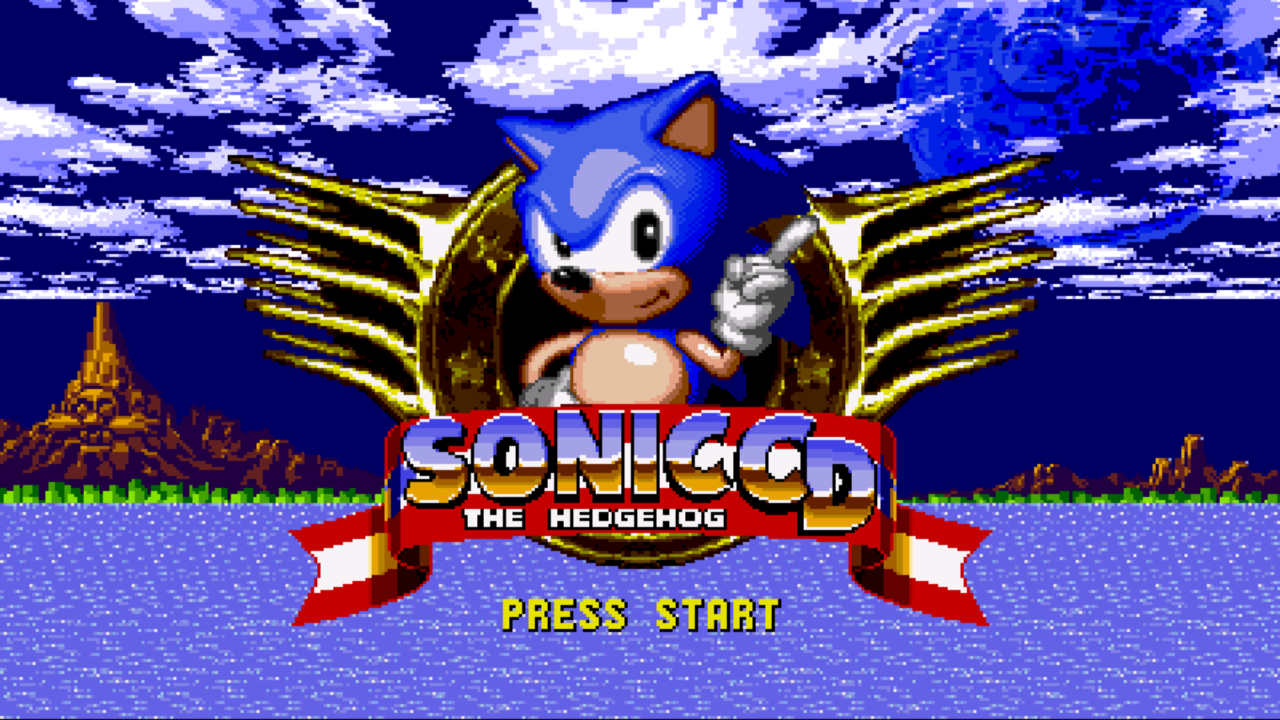
Sonic the Hedgehog CD. For a time, even saying the name produced an aura of mystique. Released during SEGA’s nearly-undisputed reign in the 90’s, the fact it was only available on the Mega-CD forced the next entry in the Sonic franchise to become a cult classic. There was no Mega Drive counterpart, kids without the hardware add-on instead being gifted Sonic Spinball for the holiday season of ‘93. Sonic CD would become this mythical game for those it was out of reach, screenshots in magazines being the only way to experience it. Even when Sonic 3 and Sonic & Knuckles were released the following year, there was still the sense that, somehow, one had missed an important chapter to the Sonic the Hedgehog saga.
True, it would be released on other platforms in the coming years, but somehow it still seemed a curiosity. The PC version from 1996 was harder to come across than it should have been. A port was meant to be in the Sonic compilation Mega Collection, but due to emulation issues was held back until the less-successful follow-up, Sonic Gems Collection. It wasn’t until the 2011 rerelease on the Retro Engine that it became accessible to a wider audience. No collections needed, just an Internet connection and enough hard drive space to experience the definitive version of the game.
Even before it was released on modern hardware, people argued how great the game actually was. Debates on the game’s level design, which version of the soundtrack is better, and where it ranks as one of the best or worst in the Sonic pantheon are topics that have been repeated in nearly every corner of the Sonic Internet community. It’s an argument that began the moment the game was released – GamePro gave Sonic CD its highest honors, while the review on UK television show Gamemasters felt it was “a problem” that Sonic was still going through platform levels. But regardless of how one feels about Sonic CD, it can not be denied that it delivered to the player some of the most iconic aspects of the franchise. The opening animation. Metal Sonic. Amy Rose.
And? It gave us time travel.
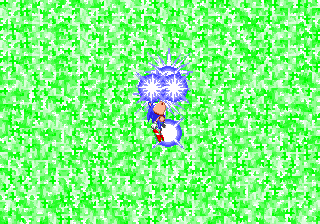
Now, I know what you might be thinking. How could time travel be described as an iconic part of the tapestry that is Sonic the Hedgehog? While it’s not something that’s featured in every game, the concept has been part of Sonic’s DNA for a long time. Sonic CD gave it to us first, but it was originally meant to be a driving force behind Sonic the Hedgehog 2. Later games like Sonic 06 and Generations had the sci-fi trope as the core of its narrative. Numerous pieces of licensed Sonic media have featured time travel as a plot device. You can’t use Silver the Hedgehog in anything unless he’s traveled back in time. Heck, one could argue Sonic Adventure plays with the idea, even if they are only visions of the past and not actual displacements in time.
But why time travel and Sonic? Well, maybe all one has to do is watch Back to the Future.
You were also the director of Sonic CD — another game that had time travel as a play mechanic. Have you liked that mechanic for a while?
NO: Well, I wanted a Sonic where the levels changed on you — where Sonic would go really fast, like in Back to the Future, and bang, wind up in a different place.
Back to the Future established two very important things. 1) You have to be going eighty eight miles per hour if you want to warp through time, and 2) If you’re going to bother at all, why not do it with some style? If the Delorean somehow became the epitome of cool time travel, why couldn’t the personification of all that was hip and rad in the 90’s do the same thing? He had the speed, he had the style, now all he needed was a game that would let him hit the speed of time.
There’s no better example of what made Sonic the “cool dude with a ‘tude” than the opening animation of Sonic CD. Turning it on for the first time, the player is greeted to an unexpected, yet welcomed, sight. Visuals showing off Sonic in a way previously impossible. Running at incredible speed, crashing through rocks, pulling off acrobatics that could not be conveyed in a 16-bit game of the era. Even the two DiC cartoons, which had begun airing by the time CD finally came out in the west, never quite hit the same way as that 01:30 on the Sega CD. Of course, making an animated show, especially in the 90’s, wasn’t the easiest thing to do. Budget and timing all factors conspiring against why we never saw Sonic jump about the way he does in CD’s animations, but I digress…
It’s during that opening sequence we get our first glimpse of Little Planet. Instead of being a greenery under attack, it has already visually succumbed to Eggman. Covered in metal, chained to the earth below on a mountainside etched with Eggman’s visage. Clearly, this small vacation spot for Sonic has already taken a turn for the worst. Little Planet is no longer an inviting locale for Sonic to explore, instead becoming the latest base of operations for his long-time nemesis. And yet, without a second thought, Sonic rushes ahead, scaling the chain and entering parts unknown.
Yet when the game proper begins, what does the player see? Palmtree Panic, a tropical paradise not all too dissimilar from Green or Emerald Hill. The perfect terrain to become acquainted with Sonic, to try out his new moves, to explore and see what those crazy sign posts are all about. A stark contrast to the planet’s surface we saw only moments before.
What does this mean? Well, the practical answer is that a metallic-infused planetoid is far more visually enticing for the player to want to jump in and save the day. But within the context of Sonic’s world? Whatever Little Planet’s original future was meant to be, the simple act of Sonic stepping foot on the planet changed what could, and would, happen. Now, that doesn’t mean Sonic suddenly saved the day. Doing a burst of future time travel in the opening Zone will let the player witness the Bad Future, of darkened skies and broken robots. But that’s also a future where Sonic went “yeah, I don’t need to fix things, I’ll just run to the end.”
![]() I don’t need to dive deep into the mechanics of a Sonic game. If you’re reading this, chances are you know how Sonic, and by extension Sonic CD, works. The future in that game is never set, the player choosing how to go about making a Good Ending, or simply concerning themselves with going as fast as possible through each level. Going back in time and finding every one of Eggman’s badnik-making machines could free the planet, but gathering the seven Time Stones is also just as much a solution to the problem. The player can decide their own fate through the game, decide the fate of Little Planet and if that metallic landscape seen in its opening seconds is really how the adventure is meant to end.
I don’t need to dive deep into the mechanics of a Sonic game. If you’re reading this, chances are you know how Sonic, and by extension Sonic CD, works. The future in that game is never set, the player choosing how to go about making a Good Ending, or simply concerning themselves with going as fast as possible through each level. Going back in time and finding every one of Eggman’s badnik-making machines could free the planet, but gathering the seven Time Stones is also just as much a solution to the problem. The player can decide their own fate through the game, decide the fate of Little Planet and if that metallic landscape seen in its opening seconds is really how the adventure is meant to end.
![]()
Looking deeper into those first few moments of the game, a larger question arises. If what Sonic saw from the outside was the “Bad Future,” but he arrives and witnesses the “Present,” and has to go to the “Past” to make a “Good Future” in each individual Zone, what is really happening here? Perhaps the real question one has to ask is, “What is time?”
![]() Now, that is a question that can’t be easily answered, especially on a front page post to a Sonic the Hedgehog fansite. Everyone is aware of the passage of time, they understand it to some degree. There are clocks on every surface, we are aware of our changing circumstances. The way we perceive it is in a linear fashion, that time is an arrow that continues forward at some constant rate, and there’s nothing anyone can do about it. How we have split the days into hours, minutes, and seconds is largely arbitrary, but necessary to help us understand the immediate world around us. But to go even further into the true concept of time is a subject that has been debated by scientists, philosophers, and everyone in between for millennia.
Now, that is a question that can’t be easily answered, especially on a front page post to a Sonic the Hedgehog fansite. Everyone is aware of the passage of time, they understand it to some degree. There are clocks on every surface, we are aware of our changing circumstances. The way we perceive it is in a linear fashion, that time is an arrow that continues forward at some constant rate, and there’s nothing anyone can do about it. How we have split the days into hours, minutes, and seconds is largely arbitrary, but necessary to help us understand the immediate world around us. But to go even further into the true concept of time is a subject that has been debated by scientists, philosophers, and everyone in between for millennia.
Saying time is linear is true from our perspective. As of now, time travel is not possible (or if it is, no one has bothered to come back in time and tell us). Regardless if you subscribe to the theory that time is the fourth dimension, or that it is a separate yet equal dimension to the 3D world we live in, there are constants that can not be shaken. The speed of light remains the same no matter where in space it is. If one goes faster, time becomes relatively slower for the individual, but time still moves in that arrow-ahead form. But the crux of any time travel story is that this law can be broken. Sure, there are theoretical particles that can travel backwards in time, but that does not yet apply to the idea of macro time travel.
If one says “hey, we can travel through time,” then more questions are asked. Is time a flat circle, and you can only go to the past by first going to the end of the universe and back around? Is it actually just slipping into alternate universes, creating fractured timelines of infinite possibilities? Or is time a jumbled up mess, circling in and around itself, that there is no such thing as a paradox because it’s all built in somehow? Not all time travel stories follow the same rules, and so it’s up to the author to try and define them, if they bother to do so at all.
What makes Sonic CD interesting, however, is that it avoids trying to tell a standard time travel yarn. Sonic 06 is far closer to that, which is why there’s been debate on how much sense that narrative makes. But for CD? It isn’t Eggman grabbing the Time Stones and hopping back to an early Green Hill Zone and trying to prevent the events of the original Sonic the Hedgehog from happening. Instead, it is all contained on Little Planet. When Sonic sees this place of miracles hovering over Never Lake, Eggman has already won. And yet, Eggman has not made any sort of move against the rest of the world. Whatever is going on is staying up there, not affecting anything else.
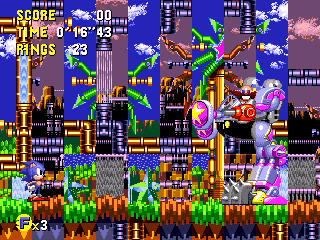 If Sonic can see the “future,” yet arrives in the “present,” but Eggman apparently took over the “past,” what does this mean? Well, we know the Little Planet doesn’t seem to behave like other celestial bodies. We know the Time Stones are there, doing whatever the heck they’re doing. So is it possible that the Little Planet is following its own set of rules? That time there does not flow in the same way it does on the surface of Sonic’s world? That the past, present, and future are somehow happening simultaneously?
If Sonic can see the “future,” yet arrives in the “present,” but Eggman apparently took over the “past,” what does this mean? Well, we know the Little Planet doesn’t seem to behave like other celestial bodies. We know the Time Stones are there, doing whatever the heck they’re doing. So is it possible that the Little Planet is following its own set of rules? That time there does not flow in the same way it does on the surface of Sonic’s world? That the past, present, and future are somehow happening simultaneously?
Now, before we go any further, a couple things to keep in mind. First, Sonic the Hedgehog, to the player, is presented as a two dimensional character. Presumably, Sonic himself does not see the world on a 2D plane. In the fiction of his world, he is a three dimensional being living in a three dimensional plane. A game like Sonic Adventure gives us a better understanding of how he perceives reality, not all too dissimilar to how we see our own. Living as a 3D being, he looks at time in the same fashion – a straight line, always moving forward. Even if his great speed can slow things down a hair, time merely slows relative to his speed. He can’t freeze the world around him, unless someone presses the pause button.
Second, consciousness in the Sonic universe does not seem to be restricted to traditional living beings. Sonic Adventure expanded upon the Sonic narrative in a number of ways, but one curious thing it did not follow up much on was what the Master Emerald is. In Sonic 3 & Knuckles, it’s presented as some grand power source, with a mysterious history. A piece of a prophecy. But in this 3D sequel, the Master Emerald reveals itself to Knuckles. He can feel it, he can sense it, but we get to see that it can communicate with him, as well. While still broken, it shows an image of the Egg Carrier to its guardian. A deliberate act, with meaning and purpose. Not that long ago, Christian Whitehead tweeted about Angel Island and the Phantom Ruby, speaking that it wasn’t surprising that Angel Island fell into the ocean preceding the events of that game, as the ruby “is a pretty strange blurpy rock which tends to react to anything with a degree of consciousness.”
If the Master Emerald and Angel Island have a degree of consciousness, even though they are not traditional carbon-based lifeforms, who is to say this can not extend to other mystical objects and locations in the Sonic series? The Chaos Emeralds, the Time Stones, or even Little Planet itself? After all, when one gets the Good Ending in CD, Sonic is greeted to a magically-displayed visage of his own face, seemingly thanking him for a job well done. If it is the planet, the Time Stones, or both, one can’t be too certain. However, there is definitely some greater consciousness at play than just Sonic, Amy, and Eggman running around. If it is the Little Planet thanking Sonic? Could that not be a being that somehow lives in the fourth dimension?
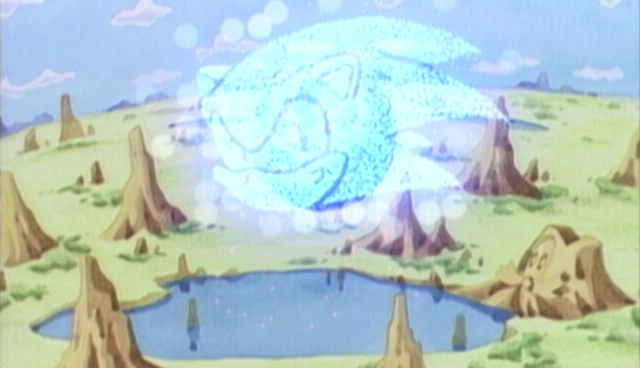
Now, there is some debate among scientific scholars if a living thing could exist outside of our three-dimensional world. Much has been said on the subject of a two-dimensional universe, that it would be incapable of providing the right circumstances for intelligent life to spring forth. This has been challenged in recent months, with a paper by physicist James Scargill diving into the theoretical nature of it all. While it is not proof there are 2D universes out there with intelligent life, it’s enough to suggest that certain core aspects of what we assume must exist for life to emerge can come elsewhere. So is it that crazy of a leap to say the same thing could apply to the dimension of time? If not in a detailed paper from a renowned physicist, then enough for a fictional world in which not only time travel exists, but super fast hedgehogs and two tailed foxes?
Little Planet, a sentient life form to some degree, born in the fourth dimension. Because space and time coexist, it makes sense that Sonic could perceive Little Planet’s existence, just as the miracle planet can perceive Sonic and his world. However, once Sonic is on the surface of this miniature planet, he can not magically understand how it functions. All points in time could coexist at once, but Sonic, a three-dimensional being, can not view all points in time. He would still see things moving forward, the only way his mind could interpret the information around him. Same with Eggman, same with Amy. Metal? Well, if he could see all of time at once, maybe he wouldn’t have run smack dab into a wall and had his face fly off.
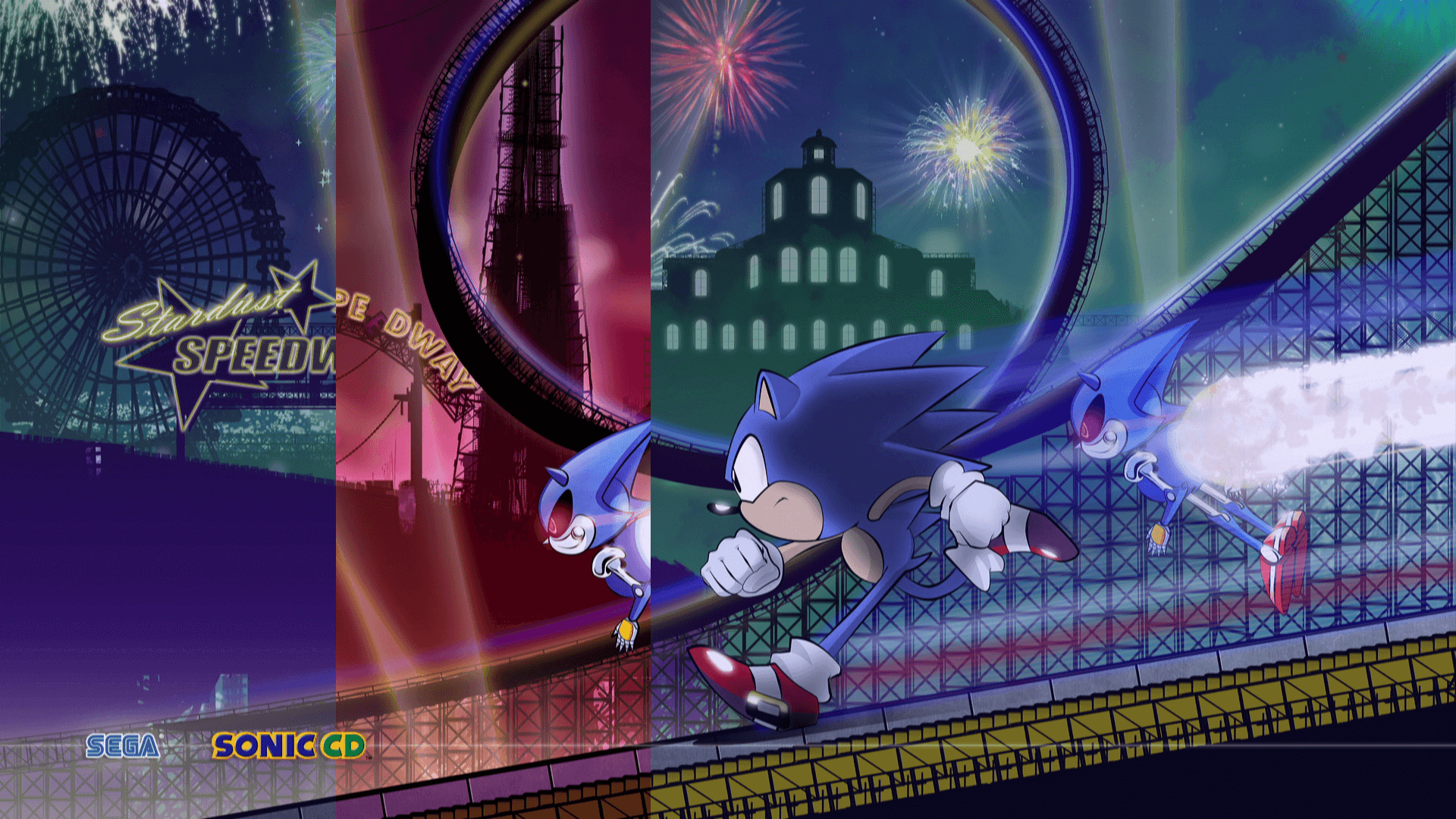
Just like how someone can look at a piece of paper and understand a flat drawing, Little Planet can look down upon Sonic and understand him just fine. However, it can not work the other way around. Sonic has to make some sense of where he is, otherwise his mind would be lost, which wouldn’t make for a very fun game. Since Sonic’s mind can not freely jump through all points in time, the planet has to give him a mechanism in which to travel along it. Hence, the Time Warp Plates. Only through speed and sheer force of will can they be activated, allowing Sonic to have a true sense of freedom. A desire that, most certainly, burns inside.
As for why Sonic arrives in the “Present,” and begins each level as such? Perhaps it is due to the very essence of Sonic’s character. Who Sonic is and what he stands for has also been discussed in depth over the Internet, but one can’t help but think back to the text located on the front of the original Mega Drive game:
Don’t just sit there and waste your precious time. When you want to do something, do it right away. Do it when you can. It’s the only way to live a life without regrets.
Sonic is very much someone who lives in the here and now. He doesn’t sit back and ruminate on the past. He doesn’t meticulously plan for the future. He is a force of nature, travelling the planet much like the wind. He isn’t too concerned where he will be the next day, as long as there’s an adventure waiting for him. And that is exactly what awaits him at the beginning of Palmtree Panic. An adventure.
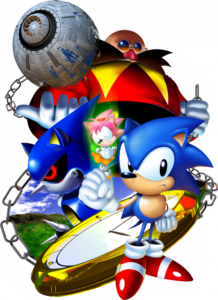 As for Eggman? Well, there is a reason he has “the master plan.” He is a man who is obsessed with the future. He dreams of creating Eggmanland, of conquering the world. He comes to this mysterious place in the hopes of achieving that goal. When fighting off Eggman’s forces, Sonic only comes into contact with Eggman in the future. That is the domain where he feels the safest, assured that he will come out victorious. Before Sonic arrives, the Little Planet falls because, presumably, Eggman was able to find the Time Stones. When Sonic ventures into the future without visiting the past, he sees the accomplished Eggman. Sure, his boss fights can sometimes be easily vanquished, but that doesn’t change the world around them. It is still a dystopian, broken world instead of an idealized landscape where nature and technology can work together. Even when Sonic does make a Good Future before fighting Eggman? That end of level fight is still in the future. Eggman can not freely travel through time, but if he were to leave and return to Little Planet, his obsession with his future success would prevent him from landing in the “past” or the “present.” Only if he had the Time Stones could he so ruthlessly corrupt this mystical paradise.
As for Eggman? Well, there is a reason he has “the master plan.” He is a man who is obsessed with the future. He dreams of creating Eggmanland, of conquering the world. He comes to this mysterious place in the hopes of achieving that goal. When fighting off Eggman’s forces, Sonic only comes into contact with Eggman in the future. That is the domain where he feels the safest, assured that he will come out victorious. Before Sonic arrives, the Little Planet falls because, presumably, Eggman was able to find the Time Stones. When Sonic ventures into the future without visiting the past, he sees the accomplished Eggman. Sure, his boss fights can sometimes be easily vanquished, but that doesn’t change the world around them. It is still a dystopian, broken world instead of an idealized landscape where nature and technology can work together. Even when Sonic does make a Good Future before fighting Eggman? That end of level fight is still in the future. Eggman can not freely travel through time, but if he were to leave and return to Little Planet, his obsession with his future success would prevent him from landing in the “past” or the “present.” Only if he had the Time Stones could he so ruthlessly corrupt this mystical paradise.
“The power is in your mind,” sings Keiko Utoku in the opening theme. And on a living planet which exists in time so unlike anything on Sonic’s world, that must be true. The power to choose a point in time, to visually interpret the world in the only way it can. Even Amy has her mind dictate her starting point, running around in the present with hearts in her eyes, looking for her “darling Sonic.” Though her and Sonic are barely acquaintances at this point, she is intensely focused on him, and where he could be. If Sonic’s natural state is to emerge in the Present, then Amy would follow suit unknowingly. Once on Little Planet, however, she would have no means to travel through time herself, meaning the player could skip over her entirely if they finish Zone 1 of Palmtree Panic in the past. It’s in the blue hedgehog’s nature to live in the now, so when he slips back to the Present, she is able to track him down in Collision Chaos. The only reason she enters the future is because she has been kidnapped by Metal Sonic. Once she is rescued, once she sees Sonic in the future? She follows him there too, wrapped up in this “destined encounter” they have all shared.
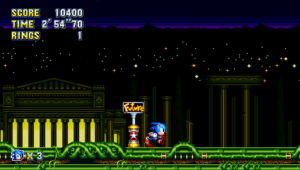 If Little Planet is alive, and trying to assist Sonic in saving the day, that could explain why Sonic begins each Zone 3 of a level in one possible future. There is some evidence pointing to this, in Sonic Mania. There, the player doesn’t get to choose what time zone they’ll run around in. After Act 1 of Stardust Speedway, Sonic is forced into the present, where Eggman and Metal Sonic are waiting for their rematch. There’s nothing to say that the same thing didn’t happen off screen between each Zone 2 and Zone 3 of the original Little Planet adventure. It knows where Eggman resides in his own mind, and pushes Sonic to face off against him. Does the hedgehog notice? Well, he does say “time doesn’t wait for me. I choose to go my own way.” If Sonic didn’t choose his own way, wasn’t headstrong in facing off against Eggman? Perhaps then the Little Planet couldn’t have nudged Sonic across time.
If Little Planet is alive, and trying to assist Sonic in saving the day, that could explain why Sonic begins each Zone 3 of a level in one possible future. There is some evidence pointing to this, in Sonic Mania. There, the player doesn’t get to choose what time zone they’ll run around in. After Act 1 of Stardust Speedway, Sonic is forced into the present, where Eggman and Metal Sonic are waiting for their rematch. There’s nothing to say that the same thing didn’t happen off screen between each Zone 2 and Zone 3 of the original Little Planet adventure. It knows where Eggman resides in his own mind, and pushes Sonic to face off against him. Does the hedgehog notice? Well, he does say “time doesn’t wait for me. I choose to go my own way.” If Sonic didn’t choose his own way, wasn’t headstrong in facing off against Eggman? Perhaps then the Little Planet couldn’t have nudged Sonic across time.
When it comes to Eggman and his desires, his plan is to try and conquer something he doesn’t understand. Not all too dissimilar to nearly every plan he’s ever conceived. The stories of him trying to control Chaos and Shadow are easy examples, but even when all he wants to do is steal the Master Emerald to power the Death Egg? That is still him trying to use an item that is outside his field of expertise. If Sonic had never arrived, or if the Bad Ending was where the story was meant to go, that doesn’t mean Eggman would know what to do with his prize. His future still results in a broken wasteland of a planet, where his creations have run down, no longer operating the way they should. Why would his base of operations turn into that? Even if places like Scrap Brain are dirty, they are still efficient, operating at full capacity. With Little Planet, running down its resources didn’t mean success. Having the Time Stones did not equal victory. Can the Time Stones even function when they are off planet? Can they function in a world that exists in the third dimension, or would they be of no use? Those are questions we won’t find the answers to today.
There is no reason for one to think the Good Ending isn’t the true conclusion to Sonic CD. When Sonic and Amy jump off and land back on their home planet, there is for a brief moment the mechanical landscape. But in a flash, Little Planet is back to normal. Even in the Bad Ending animation, Little Planet is green and restored. Why’s that? Well, both Sonic and Eggman have left. Their influence, good or bad, is gone from Little Planet’s own timeline. If all points of time occur at once again and again, then without Eggman’s corrupting influence, there is no need for Metallic Madness to be built. The events of Sonic the Hedgehog 4: Episode Metal do not make the Bad Ending canon to that game; the fact Eggman returns to retrieve his Metal Sonic is enough to set Little Planet’s existence back into chaos. The Bad Future is restored in that moment, not that it has been there from the start.
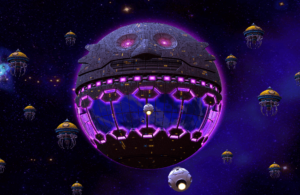 While Little Planet, Never Lake and the mirage of an island they’re all on is used sparingly, it is still essential Sonic. The possibilities of a strange little planetoid that appears only one month out of the year are still intriguing. I can’t say I would want to see it all the time. It’s far easier to involve the Chaos Emeralds into a story, after all. But Sonic Mania proved there is still plenty of narrative possibility in the locale. Heck, where it was left at the end of Sonic the Hedgehog 4: Episode II? I know there are many who wish to forget the game existed, but it did provide a kernel of something interesting. An Eggman who, knowing that previous attempts at ruling Little Planet went nowhere, tried to control it in the only way he knows how. If Sonic simply arriving on the surface is enough to spell disaster, what if he could control every aspect? Encasing it in the Death Egg Mk. II, having it all for himself. It wouldn’t matter if he got all the Time Stones or not, the very essence of the planet would be his.
While Little Planet, Never Lake and the mirage of an island they’re all on is used sparingly, it is still essential Sonic. The possibilities of a strange little planetoid that appears only one month out of the year are still intriguing. I can’t say I would want to see it all the time. It’s far easier to involve the Chaos Emeralds into a story, after all. But Sonic Mania proved there is still plenty of narrative possibility in the locale. Heck, where it was left at the end of Sonic the Hedgehog 4: Episode II? I know there are many who wish to forget the game existed, but it did provide a kernel of something interesting. An Eggman who, knowing that previous attempts at ruling Little Planet went nowhere, tried to control it in the only way he knows how. If Sonic simply arriving on the surface is enough to spell disaster, what if he could control every aspect? Encasing it in the Death Egg Mk. II, having it all for himself. It wouldn’t matter if he got all the Time Stones or not, the very essence of the planet would be his.
Of course, the Death Egg Mk. II did not serve him well in that game. He did not use the power of the Little Planet to rule uncontested. Sonic was able to shut it down relatively easily. However, even in victory, Sonic wasn’t able to shake the planet and conquer time again. Him and Tails launching away, the shell of the Mk. II remained intact. Depowered, yet there. What does this mean for the surface? What could that do to this fourth dimensional location, weirdly trapped even if Eggman isn’t there to influence it’s journey? While it’s not something I’d want followed up in an Episode III, there is a story waiting to be told there. To further explore the nature of the miracle planet, of what the Time Stones can do. A story of despair and hope. A story of a future that is, as of now, unwritten.
After all, if Sonic knew what his future was going to be, that wouldn’t be very fun, now, would it?
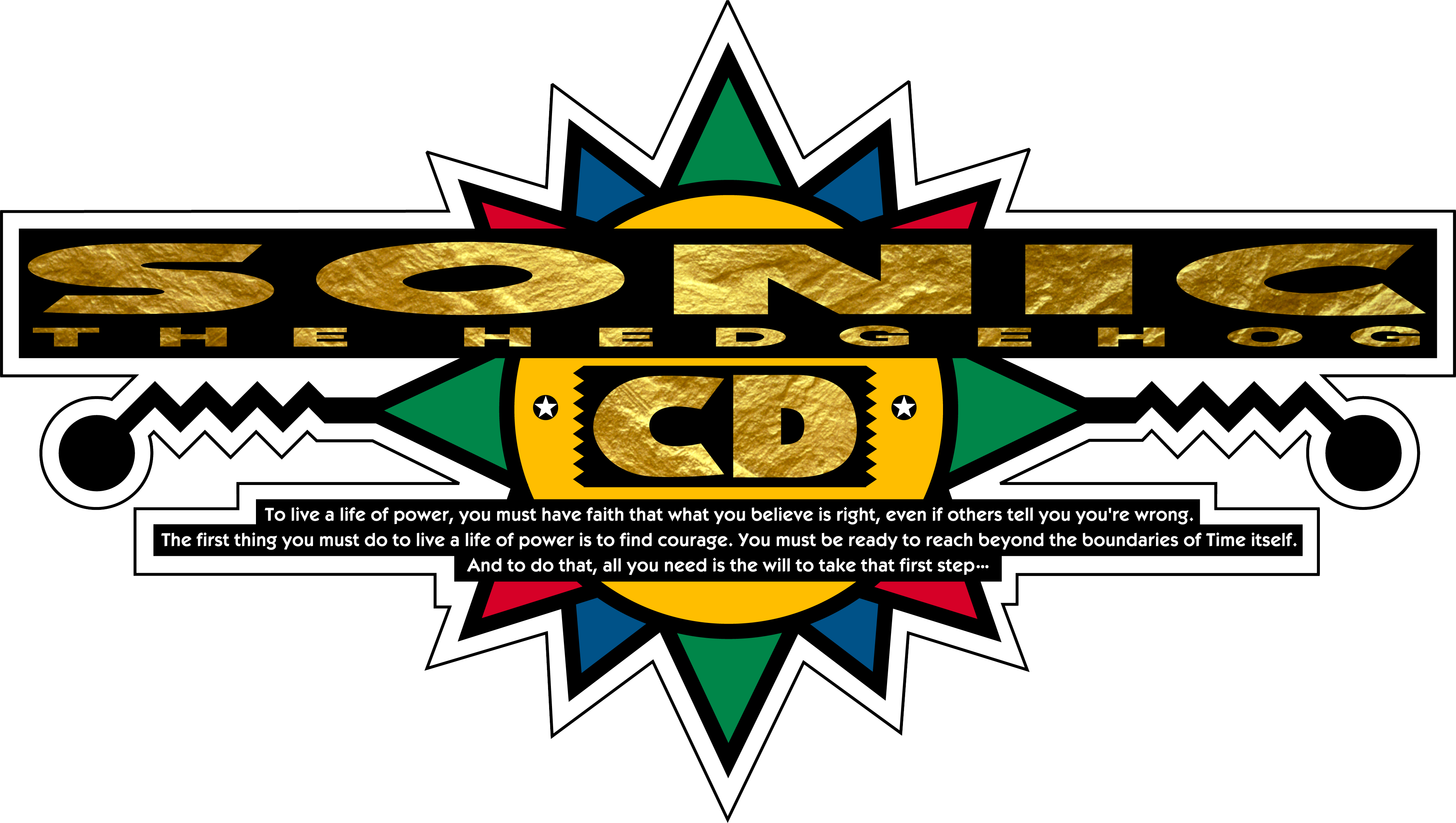
3 Comments
Sonic Boom was a better OP song than You Can Do Anything. Fight me.
An interesting theory…though it does sort of feel like it cheapens the whole time travel gimmick for CD altogether, because if all it takes to change the future of Little Planet is to set foot on it, then, relativistically speaking, all it’d take to change it back is to leave again, at least to the perspective of any and all visitors. That means all the time traveling added up to nothing, because all of those potential timelines shown were immediately reset to whatever they had been before the moment they all left. So all that leaves is Sonic coming and driving Eggman into leaving as he always does, making CD no more or less unique than any other Sonic game of that era in the long run, the attempts to change any points of time unnecessary at best.
I would rather think instead that there was a greater sense of permanence to the changes in time and the actions of all parties in them, something that isn’t so easily waved aside once the adventure is over, something that could still have potential consequences even afterwards.
Why would I want to forget about EPII?
The game was good, you bunch of cry babies